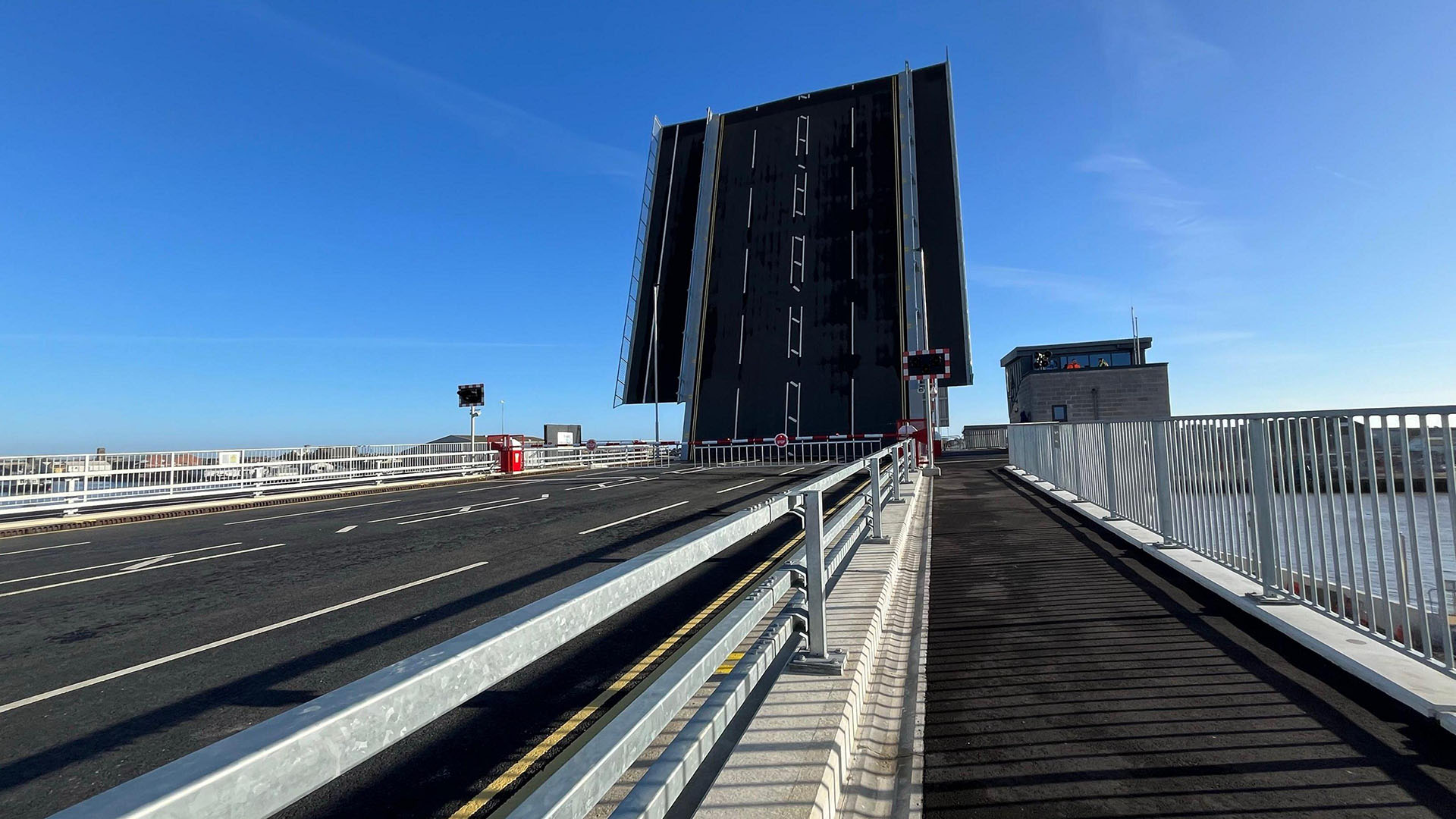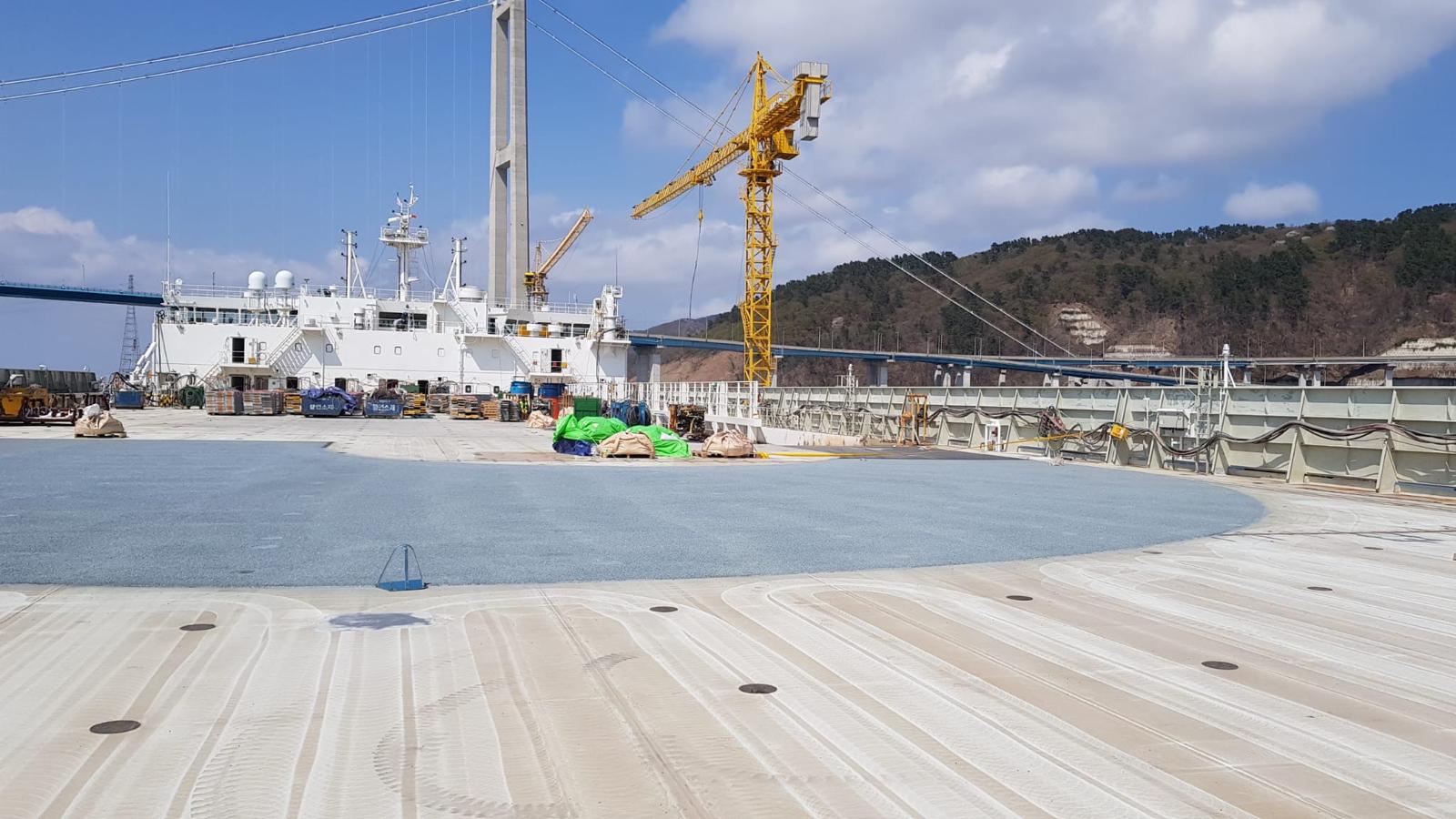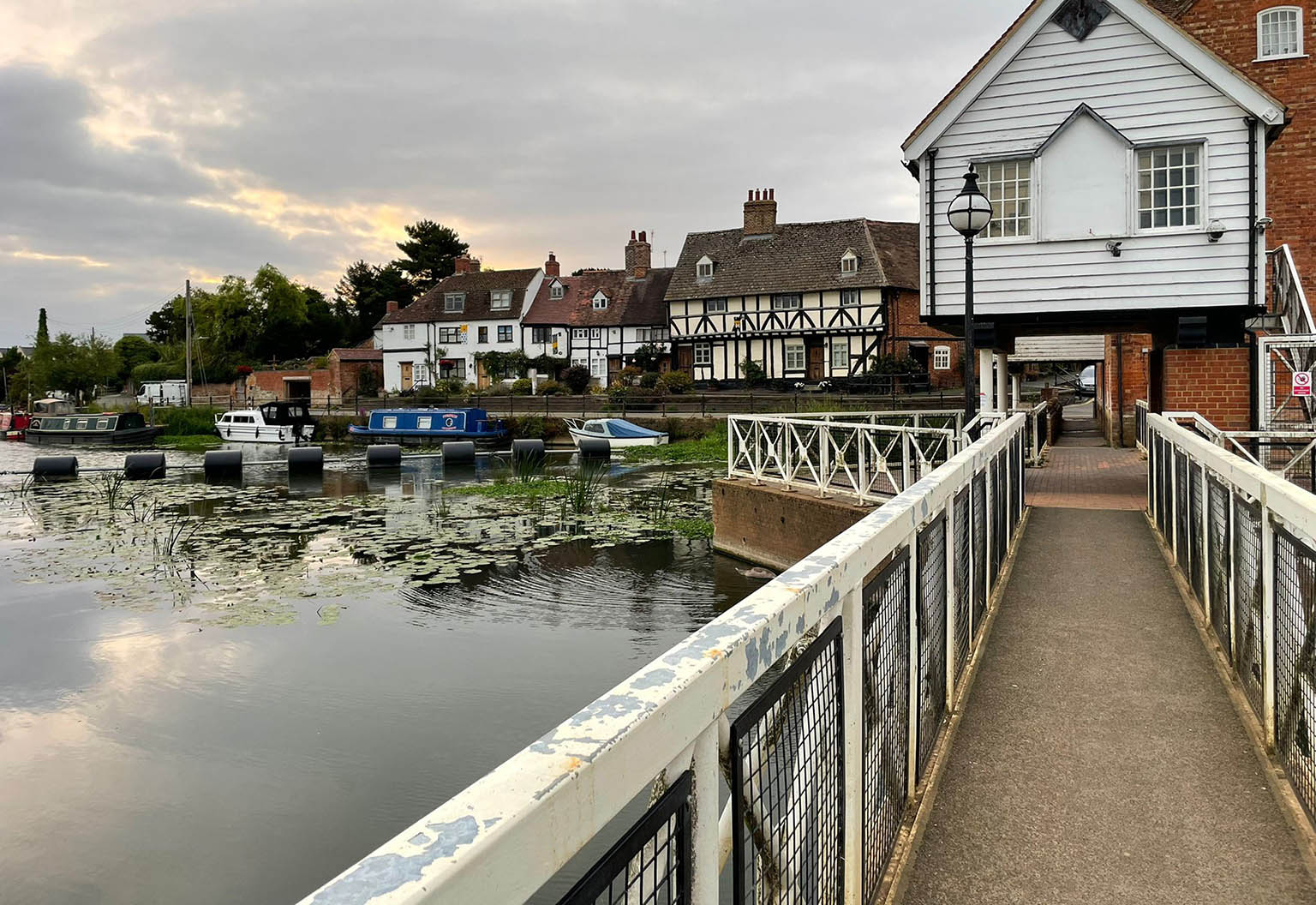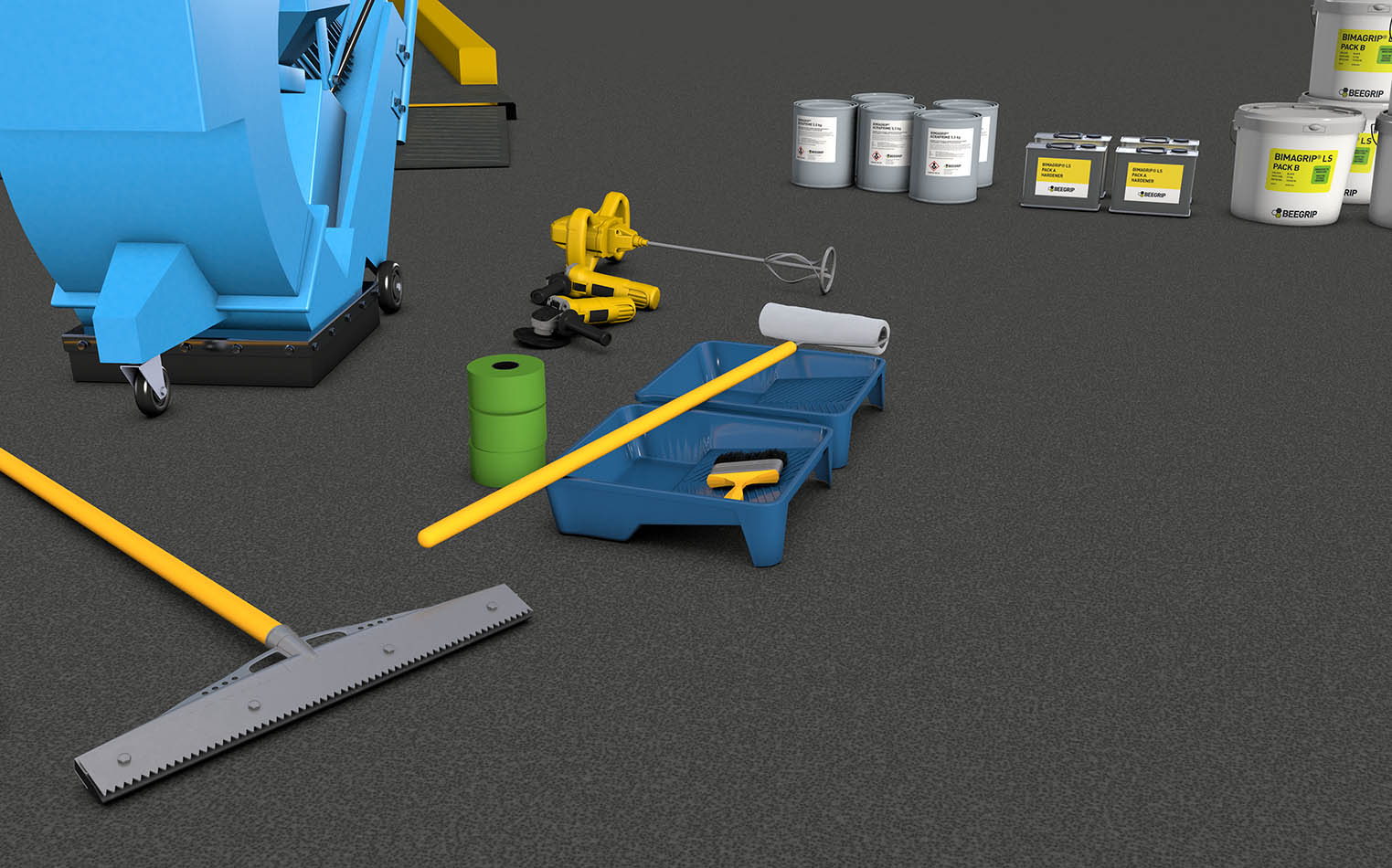
This article was originally published in Inside Sustainability and is reproduced here with full rights granted to Beegrip. By sharing it directly, we aim to give visitors access to independent coverage of BIMAGRIP®’s development, applications and impact across civil and marine engineering.
From bridges to breakthroughs
Although a young company, Beegrip was established to support an exceptional product with a long-standing reputation in the marine and civil engineering sectors. Designed to deliver superior waterproofing and anti-skid protection for a variety of surfaces, BIMAGRIP® is a world-class solution trusted by industry professionals for its durability and safety performance in demanding environments. Technical Director Josh Workman highlighted some key projects, during an interview with Imogen Ward.
Originally developed over 35 years ago in Liverpool, the world-class anti-skid solution BIMAGRIP® became the foundation for Beegrip following a strategic management buyout that ensured the company’s continued innovation and growth.
“A company called RS Clare was behind the original formulation for BIMAGRIP®,” explained Technical Director Josh Workman. “In 2017, there was a management buyout within the company that later evolved into the birth of Beegrip, and the rest is history.”
A solid solution
For the past nine years, Beegrip has supported the continued development of BIMAGRIP®, which has retained its impressive market lead worldwide, including a 75% market share of marine newbuilds within Asia.
“BIMAGRIP® is a lightweight waterproof and advanced anti-skid system that provides corrosion protection and helps reduce accidents on highways, bridges, shipping vessels and high-friction areas,” shared Mr Workman.
Initially developed for use on UK roadways, the product’s applications quickly expanded to include bridges and ship decks, as industries recognised its exceptional versatility and performance.
“The product itself is incredibly durable, flexible and it doesn’t require a lot of maintenance, which is essential for all of these chosen applications,” continued Mr Workman. “BIMAGRIP® has around 35 per cent more elasticity than standard rigid systems; incorporates the strongest aggregates on the market, opting for materials that are 9 on the Mohs scale for mineral hardness; and relies on rust-inhibiting primers.”
Thanks to its promise of durability, flexibility and low maintenance, Beegrip has been utilised in numerous major projects over the years, including a momentous bridge development.
Bridged development
Herring Bridge (also known as the Third River Crossing) is a bascule bridge spanning the River Yare in Great Yarmouth, on the east coast of the UK. The bridge features a single-span, double-leaf design that opens to accommodate marine traffic while providing access for both pedestrians and vehicles.
To support the anticipated high volumes of daily traffic, the bridge required robust foundations and a durable surface capable of withstanding heavy use.
“The bridge itself was designed to have quite a deep tray-like edge,” explained Mr Workman. “This unusual design feature meant that a much thicker application of BIMAGRIP® was required. Having previously only applied the product at a thickness of 10mm, we needed to double that for this project.
“In order to ensure the application was a success, we redesigned our method: applying the solutions in two separate coatings.”
Seventy-five per cent of this coating was applied to the bridge’s leaves in Ghent, Belgium, where they were manufactured by JMS. Once complete, the two pieces were floated by barge across the North Sea to their final destination, ready for touch ups before commissioning.
“From transportation to welding, the BIMAGRIP® layers can endure minor wear and tear throughout the process,” said Mr Workman. “That’s why we only apply the final coating once the bridge leaves are in place – to ensure the finished surface meets the highest possible standards.”
Although the project was a major success, it was far from straightforward. Due to the time of year and Ghent’s northern location, the winter months brought naturally short days with the sun staying low on the horizon. As a result, the team had to carefully plan their work around limited daylight hours.
Time constraints continued even after the bridge was floated to Great Yarmouth, where work had to pause each time a vessel needed to pass through the site.
Despite these hurdles, the project was a success and is expected to have a long lifespan. According to Mr Workman, the longevity of the solution varies from project to project. However, he is confident that in the case of the Herring Bridge, it could well last the lifetime of the structure. This longevity is a key characteristic the company continues to promote as it strives to offer greener, more sustainable solutions to the industry.

Continuous success
Such an exceptional lifecycle has already been exemplified on a number of earlier projects, including the Congress Parkway Bridge in Chicago. Standing as a testament to BIMAGRIP®’s durability, the bridge has remained maintenance-free for ten years.
“In our history, there are projects that have lasted more than 30 years,” continued Mr Workman. “From seven-lane bascule bridges such as the Congress Parkway Bridge, that sees 139,000 vehicles cross it each day, to ship decks that sail under the harshest environments in the world, we make sure to provide the best quality applications possible.”
When it comes to being green, Beegrip is also in the early stages of research and development for new product formulas. Intended to provide a more sustainable solution, the company is assessing what materials can be replaced with greener alternatives that are better sourced and less tasking on the environment. All going well, this will enable Beegrip to further improve BIMAGRIP®’s formulation without compromising on quality or durability.
Product durability, environmental impact, sustainability and human behaviour are all interconnected factors that play a crucial role in shaping the environmental sustainability of consumption patterns.
“The environmental impact of a product refers to the effects it has on the environment throughout its lifecycle, including raw material extraction, production, distribution, use and disposal,” explained Mr Workman. “Products with a shorter lifespan contribute to higher levels of waste generation, resource depletion and greenhouse gas emissions. By considering the environmental impact of products, we can make more sustainable choices that minimise harm to the environment.”
Of course, the continued success of BIMAGRIP® wouldn’t be possible without the support of Beegrip’s global network of partners and applicators – many of whom have a long-standing history with the product. Looking ahead, Beegrip aims to maintain these vital partnerships as it continues to expand its presence worldwide.
“We are focused on growing the business – not just within the marine sector and bridge decks, but also by exploring new areas of the market,” revealed Mr Workman, in conclusion. “Next year, we plan to shift more attention towards the civil sector and steadily build our presence there.
“We also aim to expand into regions where our market presence has been lighter, particularly the United States. We already have a track record there, with contributions to several iconic bridges and skyscrapers, but we would like to establish a stronger network of applicators. These steps will be key to maintaining our position at the forefront of the anti-skid coating industry.”






.jpeg)







